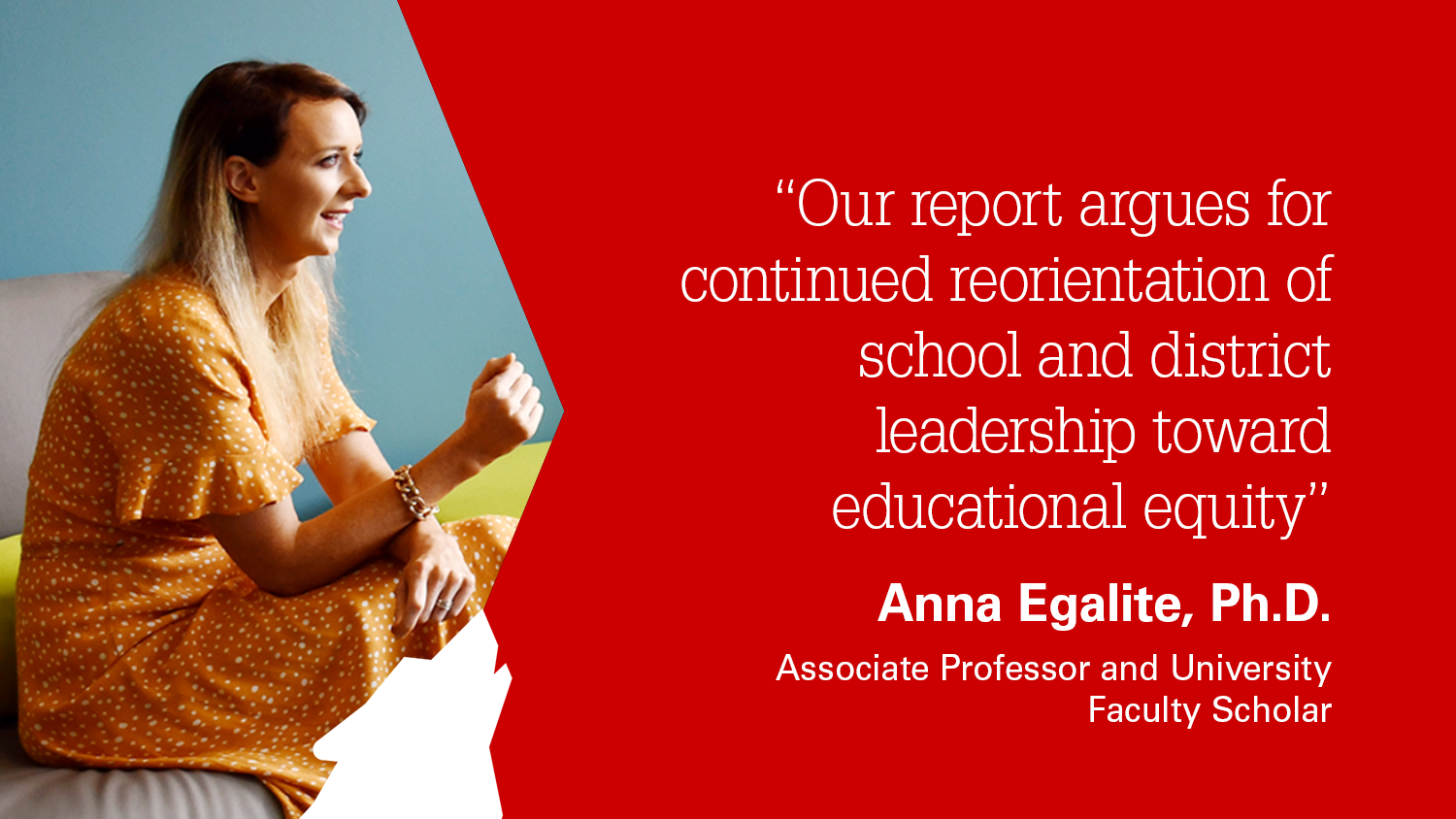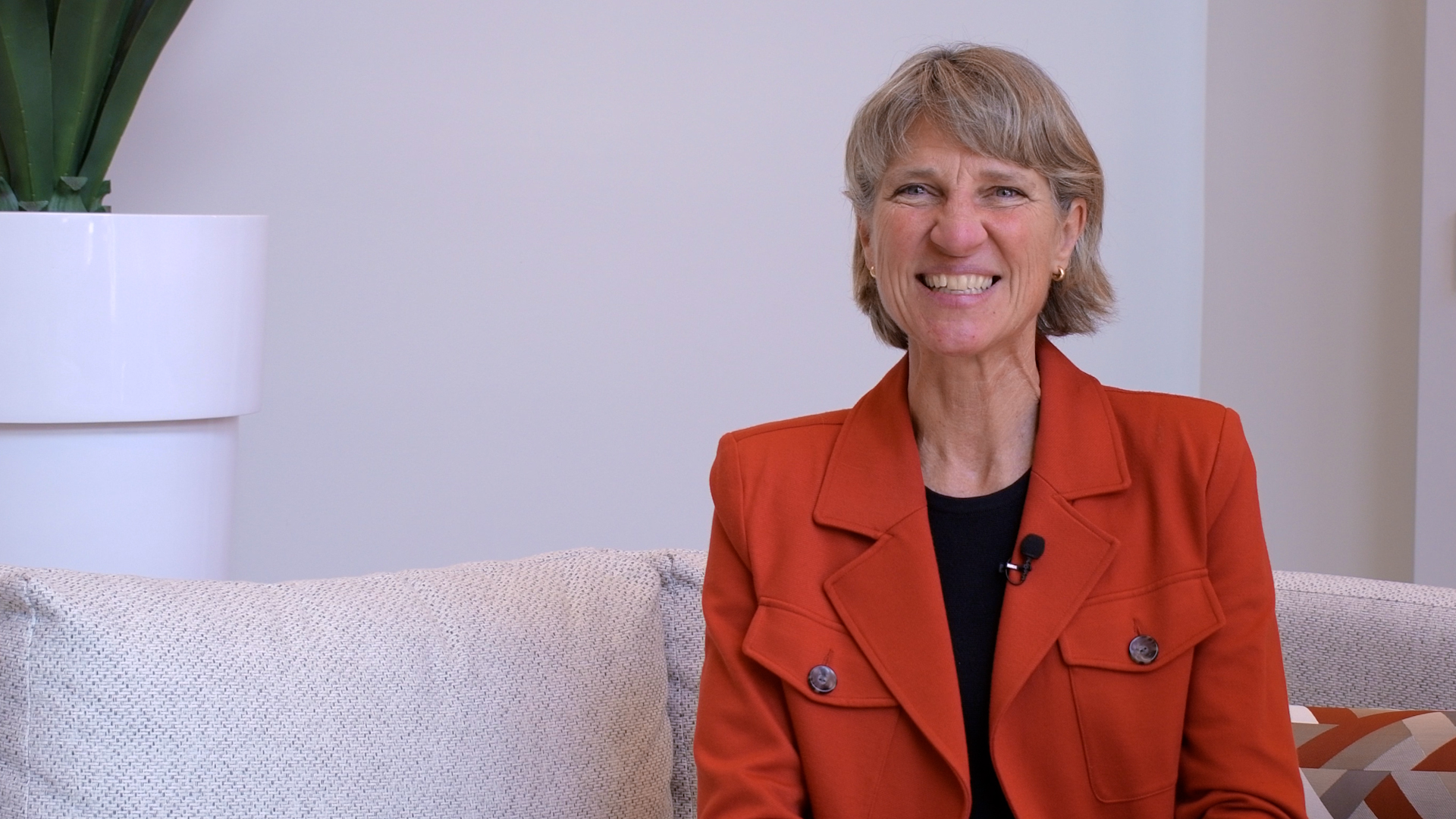Study Co-authored by Associate Professor Anna Egalite Finds Principals Have Significant, Broad Impacts on Student Outcomes

Research has shown that principals are second only to teachers when it comes to in-school factors that impact student success. Now, a new study co-authored by NC State College of Education Associate Professor Anna Egalite, Ph.D., shows that the impact of principals on student achievement is even stronger than previously thought.
Egalite, along with Jason Grissom of Vanderbilt University and Constance Lindsay of the University of North Carolina at Chapel Hill, is a co-author of “How Principals Affect Students and Schools: A Systematic Synthesis of Two Decades of Research,” which was funded by a $463,000 grant from the Wallace Foundation. The report serves as an update to the 2004 “How Leadership Influences Student Learning” Wallace Foundation report, which found that school leadership was second only to classroom instruction in impacting student learning.
Through an analysis of six longitudinal studies that collected data from more than 22,000 principals, the newest report determined that academic gains made by students who attend a school with an effective principal are significant.
Replacing a below-average principal, who ranks in the 25th percentile, with an above average principal, who ranks in the 75th percentile, can result in academic gains equivalent to about three months of additional learning in math and reading, according to the study.
This growth is close in scale to the impact of an effective teacher, as research shows replacing a below-average teacher with an above-average one results in student achievement growth equivalent to four months of additional learning for students.
However, the impact an effective principal can have on student achievement growth is broader than that of a teacher, the study says, because while a typical elementary school teacher only impacts 21 students annually, a typical principal will affect more than 480 students each year.
“The prior research had been very clear about the importance of having a strong school principal, but the field did not have precise estimates of the actual impact until relatively recently. That’s because the kinds of longitudinal data sets needed to answer causal questions like this did not really exist,” Egalite said. “With the help of an excellent team of research assistants including Educational Evaluation and Policy Analysis Ph.D. students Daniela Barriga and Elizabeth Uzzell, we initially screened nearly 5,000 studies to identify the seminal literature on this topic. From this pool, we identified the six studies that use the best-available statistical methods to tease out principals’ effects on student achievement growth to come up with our estimate of principal impact.”
In order to determine what makes for an effective principal, Egalite and her co-authors synthesized research from 200 additional studies from the past 20 years to identify three primary skill areas — people skills, instructional skills and organizational skills — that principals need for school success.
These skills manifest into four classes of behavior exhibited by principals that the report suggests produce positive school outcomes:
- Engaging in instructionally focused interactions, such as working with teachers on instructional practice through the use of evaluation, feedback and coaching
- Building a productive climate through practices that encourage a school environment marked by trust, efficacy and continuous improvement
- Facilitating collaboration and professional learning communities by utilizing strategies that promote teachers working together in authentic ways to improve practice and support student learning
- Managing resources and personnel strategically using strategic staffing and allocation of other resources
“We believe the leadership skills and behaviors we highlight in the report should represent priority areas for high-leverage investment,” Egalite said. “Together, they offer a portrait of effective principal activities. That knowledge can be used in many ways, such as informing courses offered in preparation programs and influencing topics for professional development.”
The need to create a pipeline of effective principals is crucial, as the study shows that principal experience, especially in high-needs schools, has fallen since the original Wallace Foundation report in 2004.
In addition, while more Black and Hispanic/Latinx educators have taken on the principalship over the years, the number of principals of color has not kept pace with the growing number of Black and Hispanic/Latinx students in schools.
The need to have more principals of color in schools, Egalite said, is crucial because research shows that they have a positive impact on the school environment in several ways, including improving student performance, improving teacher retention and increasing the number of teachers of color working in a school. Previous research published by Egalite has shown that students who are assigned to a teacher of the same race perform better in math and have more positive perceptions of the classroom environment.
“Our report argues for continued reorientation of school and district leadership toward educational equity. School leaders must prioritize the needs of an increasingly diverse student body. States and districts need to ensure equitable access to principal roles for leaders from diverse backgrounds,” Egalite said.
In addition to prioritizing a reorientation toward educational equity, Egalite and her co-authors offer additional policy and practice implications from their findings. These include the need for investment in improved preparation and support to cultivate high-quality principals, and the need for a focus on the identified skills and behaviors in pre-service principal preparation programs, pipeline initiatives and in-service learning opportunities.
The findings and recommendations from the report are already being considered at the highest levels of the U.S. government, as Egalite said, she and her co-authors shared the study with President Joe Biden’s Educational Transition Team after receiving a request from Team Lead Linda Darling-Hammond. Additionally, a summary of the findings was included in documents prepared for the Senate HELP (Health, Education, Labor and Pensions) Committee in connection with confirmation hearings for Education Secretary-Designate Miguel Cardona.
“I think these requests speak to the growing recognition by many groups across the country of both the magnitude and scope of principal effects on a range of student and teacher outcomes,” Egalite said.
- Categories:


